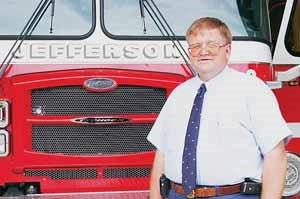
In this series, Fire Engineering Senior Editor Mary Jane Dittmar looks at the things that motivated and inspired instructors to present on their topics at FDIC International 2016. Segments will be posted on a regular basis up to and through the conference, April 18-23.
By Walter Morris, Maine Fire Service Institute
Southern Maine Community College, Brunswick, Maine
NFPA 1403: The Fire Instructor’s Risk Management Tool
Friday, April 22, 8:30 a.m.-10:15 a.m.
Too many firefighters are injured and killed in training fires each year. Between 2001 and 2010, 108 firefighters died while engaged in training-related activities. That’s more than 10 percent of on-duty firefighter deaths in those years.
National Fire Protection Association (NFPA) 1403, Standard on Live Fire Training Evolutions, was introduced in 1986 as a direct result of a training incident in Boulder, Colorado, in which two firefighters were killed and a third was seriously burned.
In 1983, the Maine Fire Service Institute (MFSI) (then known as Maine Fire Service Training) published the “Structural Fire Attack Policy & checklist.” In fact, NFPA 1403 was modeled after this document. (Students attending this class will receive a copy of this Policy & Checklist.)
Same Problems Evident
It is 30 years later, and the fire service is making the same mistakes and taking the same shortcuts during training evolutions that have caused so much harm in the past.
In 2001, 19-year-0ld Bradley Golden volunteered as a firefighter in New York State. He was killed in his very first training fire when a flashover turned the second floor of the old house in Lairdsville, New York, where the training was taking place into an inferno. Lairdsville Fire Department Assistant Chief Alan Baird III was subsequently convicted of criminally negligent homicide in Golden’s death and was jailed.
In the aftermath of this tragedy, and faced with the New York State Legislature’s contemplating making it illegal for firefighters to train with live fire in acquired structures in the state, the then New York State Association of Fire Chiefs asked that I prepare a seminar series on Life Fire Training Safety. The seminars were presented without charge throughout the state. Fire Engineering requested that I present that program at FDIC in 2003. I have been teaching on the topic at FDIC ever since–of course, with ongoing revisions and updates. Although NFPA 1403 has been in existence since 1986, few organizations provide formal training on how to use this valuable document to maximum advantage. FDIC is the best venue for providing this training to a large audience of fire instructors and fire officers.
Despite our efforts, fire departments still are not following the proper procedures. We were asked to investigate an incident that occurred on Sept. 17, 2014. The Hollis (ME) Fire Department hosted a joint live fire training session with neighboring fire departments. Three departments participated. During the first fire attack evolution, a group of firefighters from one of the departments was attacking the fire when rapid fire progression caused burn injuries to one of them and significant thermal damage to the personal protective equipment of all in the group.
The MFSI investigation team offered the following Lessons Learned:
- Ensure that two training officers are present with a charged hoseline during the ignition or refueling of a training fire, in accordance with NFPA 1403.
- Determine the minimum amount of flame, heat, and smoke needed during live fire evolutions to perform training while ensuring firefighter safety.
- Use the minimum fuel load necessary to conduct live fire training.
- Prohibit the use of secondary fires, even small “smudge pot” fires used to enhance smoke and heat conditions. Understand that smoke is fuel.
- Ensure that adequate ventilation is provided in conjunction with fire attack operations when these operations place firefighters in the “fire flow path.”
We must learn from history, or, as Ben Franklin warned, “we will be doomed to repeat it.”



